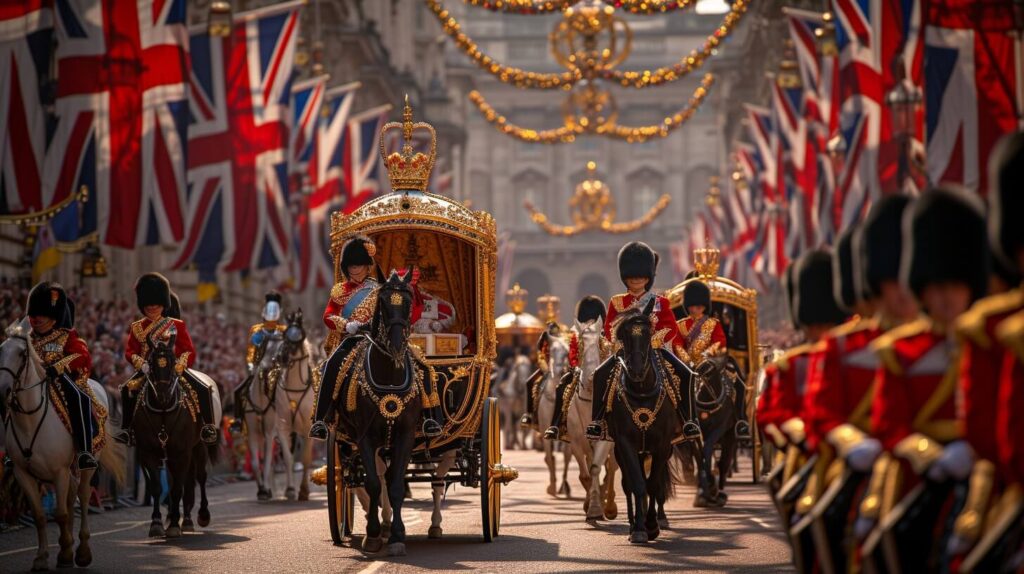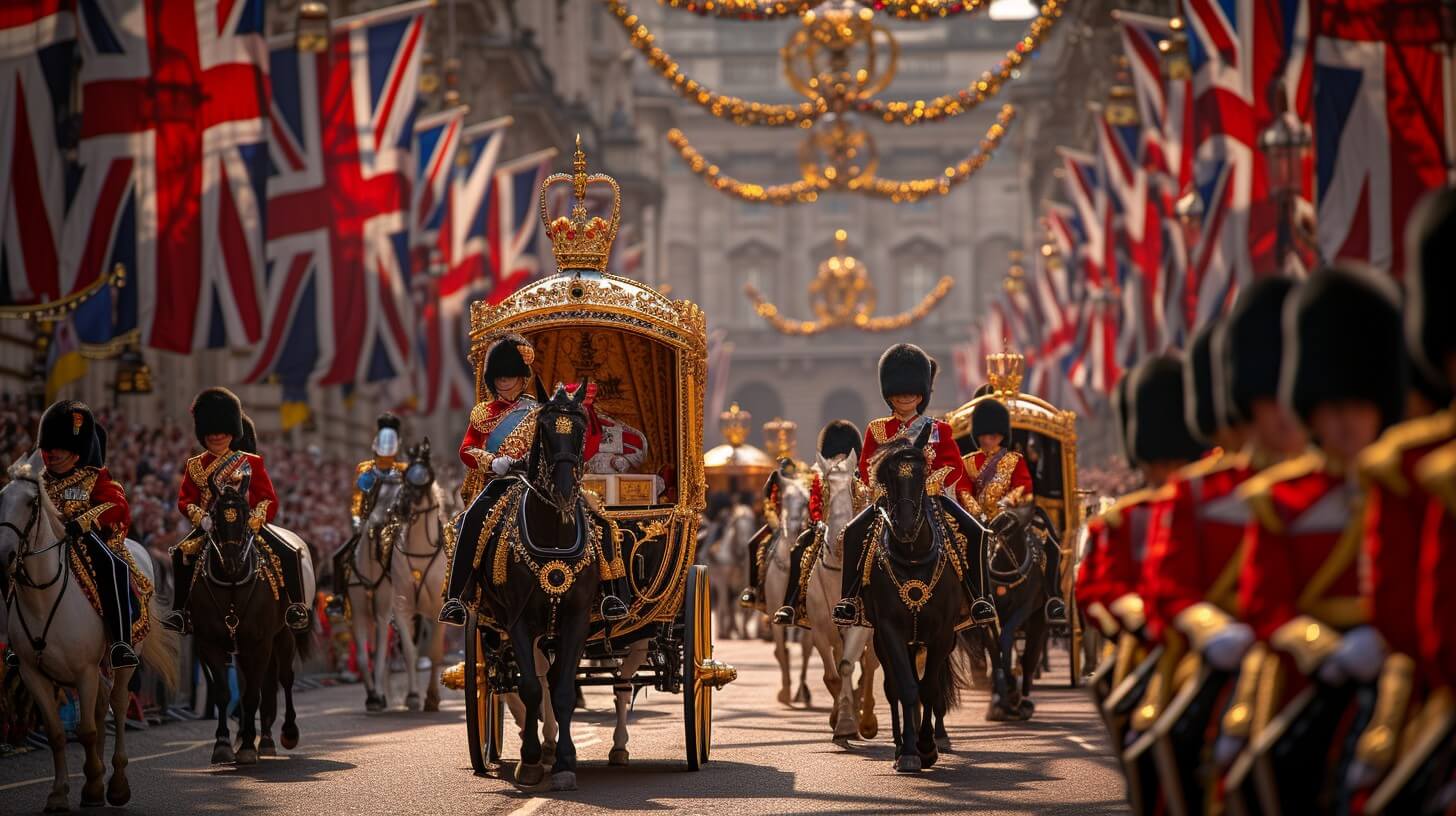Reimagining British Traditions often evoke images of grandeur and formality, a world steeped in history and ritual.
However, in today’s dynamic society, many of these traditions have evolved, blending the old with the new to fit modern lifestyles.
This guide delves into the ways British traditions are being reimagined, offering practical advice on how to integrate them into contemporary life while maintaining their rich heritage.
We will explore common questions and concerns, provide relatable examples, and share personal stories to make the content feel like a conversation with a knowledgeable friend.

Common Questions and Concerns
- What are some well-known Reimagining British Traditions?
- How have these traditions evolved over time?
- Can modern lifestyles integrate these traditions without feeling outdated?
- What are some practical ways to incorporate British heritage into daily life?
- Are there any misconceptions about British traditions that need clearing up?
Well-Known Reimagining British Traditions
Afternoon Tea: A Modern Twist
Traditional View: Afternoon tea is a formal event, typically held between 3:30 and 5 PM, featuring a strict menu of finger sandwiches, scones with clotted cream and jam, pastries, and a selection of teas.
Modern Twist: The concept of afternoon tea has become more flexible, adapting to various settings and tastes. It can be a formal gathering or a casual meet-up with friends. Modern afternoon teas might include a mix of traditional items and contemporary snacks, such as avocado toast or even sushi.
Personal Story: “I remember my grandmother’s afternoon teas with the finest china and perfectly cut sandwiches. Nowadays, I invite friends over for a ‘tea party’ where we mix traditional scones with trendy snacks like matcha cookies. It’s a wonderful blend of old and new.”
Practical Tips:
- Theme Your Tea: Create a themed afternoon tea, such as a garden party, a vintage tea, or even a literary-themed event.
- Mix Up the Menu: Combine traditional scones and sandwiches with modern treats like mini quiches, gourmet sliders, or vegan pastries.
- Relax the Dress Code: Encourage guests to dress comfortably. The focus should be on enjoyment rather than formality.
Royal Celebrations: Keeping the Spirit Alive
Traditional View: Royal events like Trooping the Colour, royal weddings, and jubilees are seen as grand, formal occasions that follow strict protocols.
Modern Twist: While these events still carry significant historical weight, the way people celebrate them has changed. Street parties, community gatherings, and watching the events on big screens have become popular ways to join in the festivities. It’s more about community spirit and less about strict formalities.
Relatable Example: “During the last royal wedding, our street had a massive block party. We decorated the place with bunting, had a potluck lunch, and everyone watched the wedding on a big screen. It was a fantastic way to bring the community together.”
Practical Tips:
- Host a Street Party: Organize a neighborhood gathering with decorations, shared food, and live broadcasts of the event.
- DIY Decorations: Make your own bunting, flags, and other festive decorations to add a personal touch.
- Community Activities: Plan activities like face painting for kids, games, and a best-dressed contest to keep everyone engaged.
Making Traditions Part of Everyday Life
Incorporating Heritage in Daily Routines
Cooking: Experiment with Reimagining British Traditions recipes. Try making a Sunday roast, shepherd’s pie, or a simple Victoria sponge cake.
Personal Story: “Cooking a Sunday roast has become a weekly ritual in our house. It’s a way to gather the family, enjoy a hearty meal, and keep the tradition alive in a relaxed, modern way.”
Home Decor: Add a touch of British charm to your home with items like Union Jack cushions, vintage teapots, or classic literature on your bookshelf.
Language: Sprinkle your conversations with charming British phrases. Instead of saying “awesome,” try “brilliant!” or “splendid.”
Relatable Example: “I’ve started using British phrases like ‘brilliant’ and ‘lovely’ in my everyday speech. It’s a fun way to bring a bit of British flair into my daily life.”
Busting Myths about Reimagining British Traditions
Myth 1: All British traditions are old-fashioned and stuffy. Reality: Many traditions have been updated and can be enjoyed in a contemporary setting. The essence remains, but the approach is flexible.
Myth 2: Only older generations care about these traditions. Reality: Younger people are finding new ways to engage with and celebrate British heritage, making it relevant for all ages.
Seasonal Celebrations: Reimagining Classic Holidays
Christmas: From Dickens to Digital
Traditional View: Christmas in Britain conjures images of Dickensian scenes with carolers, Christmas pudding, and cozy fireplaces.
Modern Twist: While many traditional elements remain, modern British Christmas celebrations often include new traditions like Secret Santa, digital advent calendars, and themed holiday parties.
Personal Story: “Every year, my family combines traditional Christmas carols and a big roast dinner with a modern twist. We use a digital advent calendar and host an ugly Christmas sweater party for our friends.”
Practical Tips:
- Update Your Decorations: Mix vintage ornaments with modern LED lights and themed decor.
- Combine Old and New Foods: Serve traditional dishes like roast turkey alongside contemporary favorites like gourmet cheese boards or international cuisine.
- Engage with Technology: Use apps for carol singing, digital advent calendars, and organizing holiday events.
Weddings: Merging Elegance with Ease
Traditional View: British weddings are often formal affairs with elaborate ceremonies, traditional attire, and classic receptions.
Modern Twist: Many couples now opt for a blend of tradition and personal style, such as rustic barn weddings, eco-friendly ceremonies, or themed celebrations that reflect their personalities.
Relatable Example: “At our wedding, we kept the traditional vows and bridal march but added a personal touch with a Harry Potter-themed reception. It made the day uniquely ours while still honoring tradition.”
Practical Tips:
- Personalize the Ceremony: Incorporate traditional vows but add personalized readings or symbolic rituals.
- Unique Venues: Consider non-traditional venues like barns, gardens, or even historic sites.
- Eco-Friendly Options: Use sustainable materials for decorations, opt for locally-sourced food, and choose an ethical wedding dress designer.

Exploring British Fashion: Past Meets Present
Traditional View: British fashion is often associated with classic styles like tweed, trench coats, and tailored suits.
Modern Twist: Contemporary British fashion blends these classic elements with modern trends, creating a unique style that pays homage to heritage while embracing innovation.
Personal Story: “I love mixing vintage pieces with modern fashion. Wearing my grandmother’s tweed jacket with a pair of skinny jeans and ankle boots is my go-to look. It’s stylish and a nod to my British roots.”
Practical Tips:
- Mix and Match: Combine vintage clothing with modern pieces to create a unique style.
- Support Local Designers: Look for British designers who incorporate traditional techniques with contemporary designs.
- Accessorize: Use traditional accessories like brooches, scarves, and hats to add a touch of British elegance to your outfit.
British Festivals: Tradition with a Twist
Guy Fawkes Night: More Than Just Bonfires
Traditional View: Guy Fawkes Night, or Bonfire Night, is celebrated with fireworks, bonfires, and the burning of effigies.
Modern Twist: While fireworks and bonfires remain central, modern celebrations often include community events, themed parties, and a focus on family-friendly activities.
Relatable Example: “Our local community center hosts a family-friendly Guy Fawkes Night with fireworks, a bonfire, and activities like face painting and food stalls. It’s a great way to celebrate with a modern touch.”
Practical Tips:
- Host a Themed Party: Organize a Bonfire Night party with themed decorations, food, and activities.
- Community Involvement: Get involved in local events that offer a variety of activities for all ages.
- Safety First: Ensure all firework displays and bonfires are conducted safely and in accordance with local regulations.
Embracing British Literature: Classic and Contemporary
Traditional View: British literature is rich with classics from Shakespeare, Austen, and Dickens.
Modern Twist: While these classics remain beloved, contemporary British authors are bringing fresh perspectives and new stories that resonate with today’s readers.
Personal Story: “I grew up reading Jane Austen and Charles Dickens, but I’ve recently discovered contemporary British authors like Zadie Smith and Ian McEwan. It’s fascinating to see how British literature has evolved.”
Practical Tips:
- Create a Reading List: Mix classic British literature with contemporary works to get a broad perspective.
- Join a Book Club: Participate in discussions about British literature, both classic and modern.
- Support New Authors: Explore works by emerging British writers and support local bookstores.
Conclusion
Reimagining British Traditions hold a timeless charm that can seamlessly blend with modern lifestyles. By reimagining these traditions, we can enjoy the best of both worlds—honoring the past while embracing the present.
Whether it’s a relaxed afternoon tea, a community celebration, or a personalized wedding, these traditions continue to enrich our lives in meaningful ways.
So, dive into the rich heritage, and let it inspire your contemporary world with warmth, elegance, and a touch of British flair.
Frequently Asked Questions
How are traditional British holidays being updated for modern times?
Traditional British holidays like Christmas and Guy Fawkes Night are being reimagined with more inclusive and sustainable practices.
For Christmas, there’s a growing trend towards eco-friendly decorations, locally-sourced food, and gift experiences rather than material presents.
Guy Fawkes Night is shifting focus from burning effigies to community gatherings with light shows and fireworks displays that celebrate unity rather than historical conflicts.
What new twists are being put on classic British cuisine?
British cuisine is evolving to incorporate diverse global influences while maintaining its core identity.
Traditional dishes like fish and chips are being reinvented with plant-based alternatives and gourmet ingredients.
Sunday roasts now often feature international flavors and vegetarian options. Additionally, there’s a renewed interest in reviving forgotten regional recipes with modern cooking techniques.
How is the English pub culture adapting to changing social norms?
The quintessential English pub is evolving to meet changing consumer preferences. Many pubs now offer craft beers, artisanal spirits, and sophisticated food menus to attract a wider audience.
There’s also a trend towards creating more inclusive spaces, with family-friendly areas and non-alcoholic drink options.
Some pubs are even incorporating co-working spaces and community events to remain relevant in the digital age.
In what ways are British cultural institutions embracing digital technology?
British museums, galleries, and heritage sites are increasingly integrating digital technology to enhance visitor experiences and reach wider audiences.
This includes virtual reality tours, interactive exhibits, and online collections. The COVID-19 pandemic has accelerated this trend, with many institutions developing robust digital offerings to engage audiences remotely.
How is the concept of British identity being redefined in the 21st century?
The notion of British identity is becoming more inclusive and diverse. There’s a growing recognition of the contributions made by immigrant communities to British culture.
This is reflected in literature, music, and the arts, where voices from various backgrounds are gaining prominence.
Additionally, there’s a renewed interest in exploring regional identities within Britain, celebrating local traditions and dialects alongside a broader national identity.
